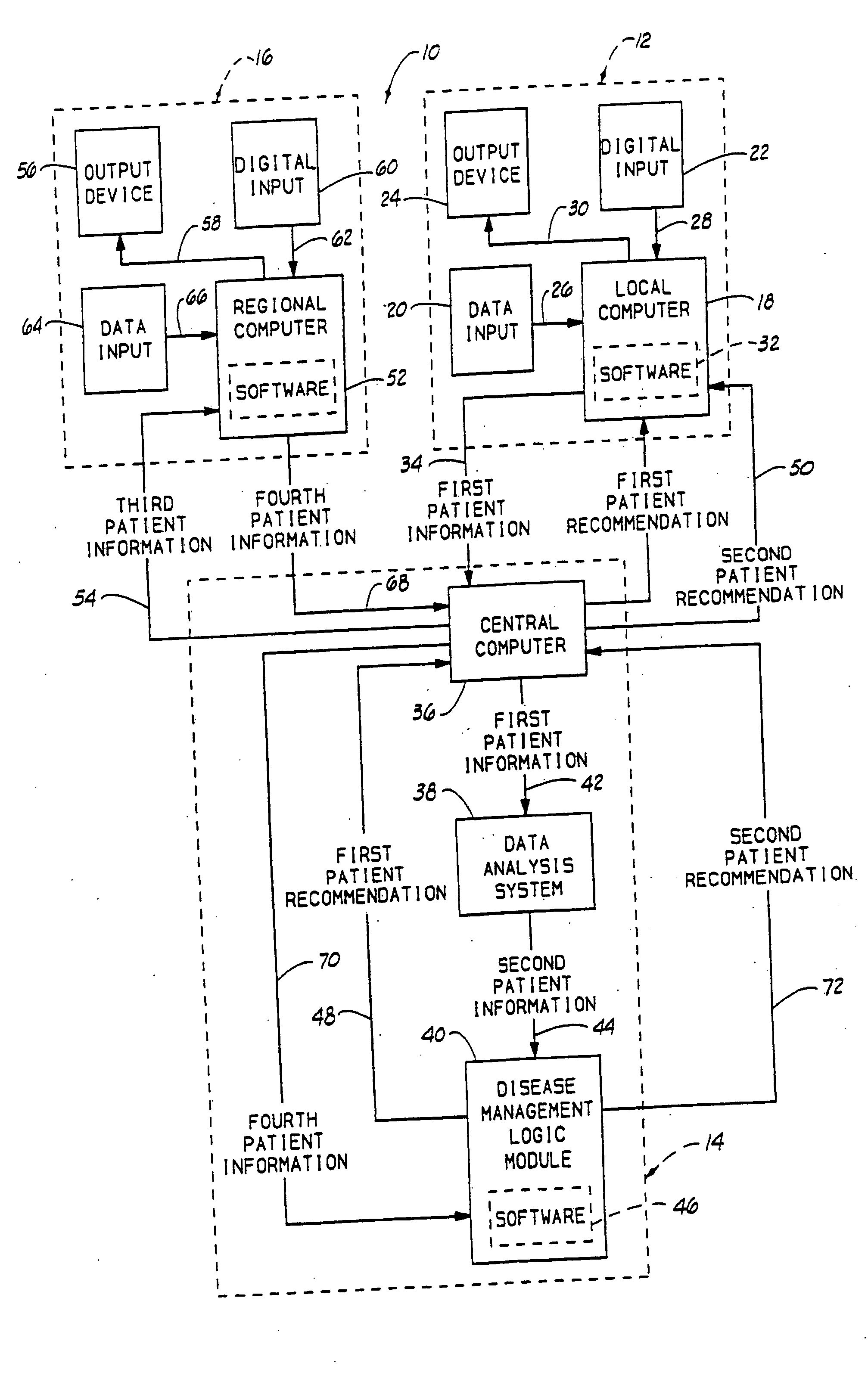Digital disease management system
a disease management system and digital technology, applied in the field of digital disease management system, can solve the problems of blindness or serious vision loss of diabetics living in rural areas, difficulty in obtaining the necessary regular eye examination for diabetic patients, and inconvenience for diabetic patients
- Summary
- Abstract
- Description
- Claims
- Application Information
AI Technical Summary
Problems solved by technology
Method used
Image
Examples
Embodiment Construction
[0012] The term “patient” as used herein alone or in combination with other words includes patients, clients, residents and consumers, and in general means a person receiving health care. The present system can also be used for veterinarian care for domestic and non-domestic animals, and in this instance the term “patient” also means a domestic or non-domestic animal, such as an ape, a chimpanzee, a dog, a cat, a cow, a pig, a goat, a foul, a horse, a hamster, a snake, a lizard, an alligator, a cheetah, a fish, a frog or the like receiving health care.
[0013] The term “patient condition” as used herein means an abnormal or diseased state of part of the patient's body. For example, the patient condition can be diabetic retinopathy, dermatologic lesions, glaucoma or any other patient condition where clinical data parameters can be converted into digital information and subsequently transmitted.
[0014] The term “health care provider” as used herein means a veterinarian, a doctor, a tec...
PUM
 Login to View More
Login to View More Abstract
Description
Claims
Application Information
 Login to View More
Login to View More - R&D
- Intellectual Property
- Life Sciences
- Materials
- Tech Scout
- Unparalleled Data Quality
- Higher Quality Content
- 60% Fewer Hallucinations
Browse by: Latest US Patents, China's latest patents, Technical Efficacy Thesaurus, Application Domain, Technology Topic, Popular Technical Reports.
© 2025 PatSnap. All rights reserved.Legal|Privacy policy|Modern Slavery Act Transparency Statement|Sitemap|About US| Contact US: help@patsnap.com


